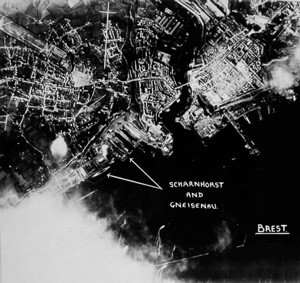As a youngish engineer in the 1980s I’d already had plenty of experience in exploiting the properties of communications signals to solve complex problems. I’d been responsible for planning and executing the in-orbit testing of the European Space Agency’s (ESA) first 3-axis stabilised Ku-Band communications satellites, OTS and ECS.
In-orbit testing is a very different game to just designing and using communications satellites on a day-to-day operational basis. The earth stations involved are actually precise, calibrated measuring instruments and one has to be very inventive about how one can exploit the signals and signal processing to understand what is going on, particularly during anomaly investigations.
So here was I in the 1980s working with a major UK defence contractor on a project. One member of this small team was a senior engineer, close to retirement, who had been heavily involved in signals intelligence (SIGINT) during WWII. It was he who conveyed to me the following account of his involvement in the fate of the German battleship, Scharnhorst, in WWII. It’s a fascinating story and despite some searching I haven’t been able to corroborate it nor find any reference to the specifics, so I’ll record it here as-told for posterity:
The Scharnhorst had been causing havoc on allied North Atlantic convoys in 1940 and 1941, and Wikipedia’s description The German Battleship Scharnhorst is very comprehensive. An RAF air raid on 24th July 1941 caused major bomb damage to the ship and it limped into the German-controlled French port of Brest on 25th July where it went into dry dock for extensive repairs.
The Scharnhorst and its state of readiness were obviously of intense interest to the allies and its communications were the subject of continuous monitoring. Most folks today will have heard of Bletchley Park and its role in breaking and exploiting the German (and other) encrypted communications. There are published reports of the Bletchley Park teams using the ENIGMA decrypts of the Scharnhorst’s communications (COMINT) to gather intelligence on the progress of the repairs. What are not reported are the other related activities of ELINT and SIGINT, and this is where my colleague comes in.
Bletchley Park carried out other functions in WWII and was but one of a number of related intelligence establishments. My colleague worked at a HF radio station outpost on a hilltop somewhere in England which was continuously monitoring the Scharnhorst’s radio transmissions.
One of the things he was monitoring was the close-to-carrier spectrum of the Scharnhorst’s transmissions. He wasn’t interested in the COMINT, but the deep behaviour of the RF signal itself.
Now for the techy bit: The RF carrier is not a perfectly clean CW signal by any means. It carries information about how the signal itself was generated, and what has happened to it during its generation, upconversion, transmission and downconversion by the monitoring station. What my colleague observed was that, in dry dock, the Scharnhorst was running on shore-based power – not its own generators. The phase noise / spurious signal sidebands were at 50Hz from the carrier signal. Lo and behold, one night some time before the 8th February 1942 these sidebands suddenly jumped in frequency to 400Hz. The Scharnhorst had switched to its own internal power, and was therefore in the water and preparing to leave Brest!
Obviously, this information was immediately fed into the system and resulted in a step up of activity by the allies. On 8th February 1942 a photo reconnaissance mission detected that the Scharnhorst plus two sister ships, the Gneisenau and the Prinz Eugen were in the Brest harbour area and preparing to leave. They left at 23:00 on 11th February 1942 (some reports state Scharnhorst cast off at 21:14 British time) to run the gauntlet of the English Channel (codename Operation Cerberus) and the rest is history.
That escape from Brest and the subsequent failure of allied electronic warfare (EW) systems to detect them is described in great detail in the book “Battle Scars of Military Electronics – The Scharnhorst Breakthrough” by Sir Robert Watson-Watt of Radar pioneering fame.
The above painting is in the UK’s National Maritime Museum, here.
Relevance in Today’s World
Apart from this story being a record of a particular individual’s contribution in the SIGINT field over 70 years ago, there are lessons here for today. That very same technique can be employed to narrow down the geographical source of interfering signals in satellite communications systems. It is but one tool that can be used in the fight against the curse of satellite interference.
In financial terms alone satellite interference (intentional or otherwise) costs the industry many tens of millions of dollars each year and is the subject of a number of mitigation programmes by the major satellite operators, a major one being the Satellite Interference Reduction Group.
 The Satellite Interference Reduction Group (IRG) is the global industry organisation with the mission of combating and mitigating radio frequency interference (RFI) for an interference-free satellite frequency spectrum.
The Satellite Interference Reduction Group (IRG) is the global industry organisation with the mission of combating and mitigating radio frequency interference (RFI) for an interference-free satellite frequency spectrum.
With a decent size antenna, a low phase noise downconverter and a spectrum analyser one can easily determine the frequency of the power grid supplying the interfering transmitter. Is it in a 50Hz country, a 60Hz country, on a ship, on an aircraft or even space-based? One can glean even more information than this, but that is beyond the scope of this article.
And remember, you heard it here first!
Copyright 2015 Satellite Spy (Dr Bob Gough)











